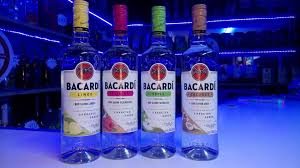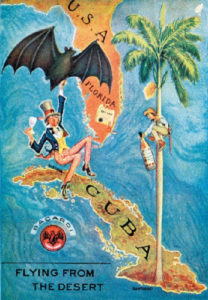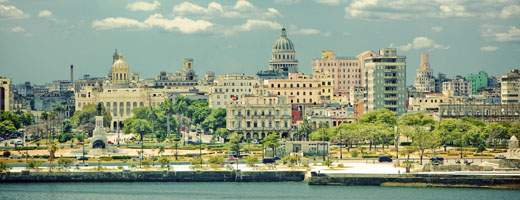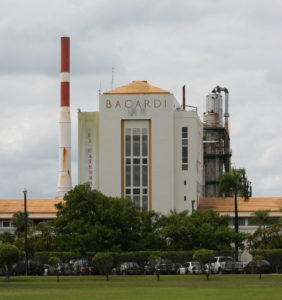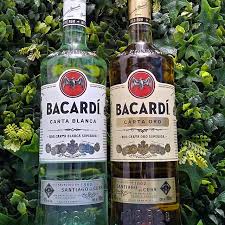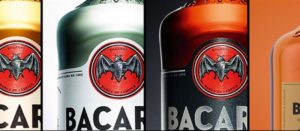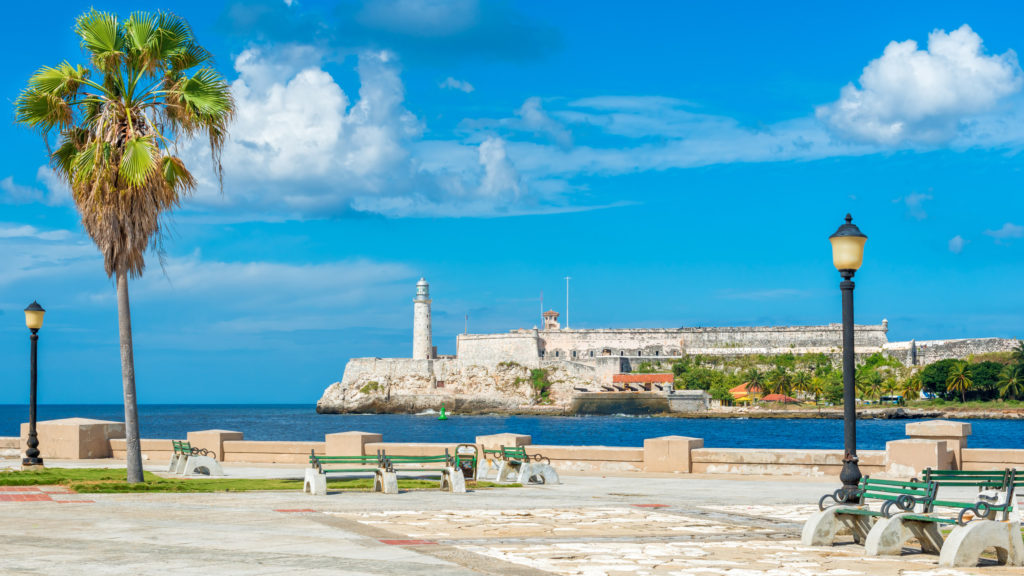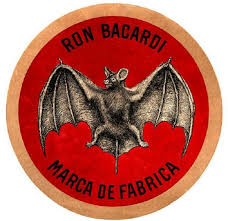 BACARDI “LA CATEDRAL DEL RÓN”, Y LA REVOLUCIÓN EN CUBA. BREVE HISTORIA.
BACARDI “LA CATEDRAL DEL RÓN”, Y LA REVOLUCIÓN EN CUBA. BREVE HISTORIA.
Bacardi Limited es la compañía estadounidense de bebidas espirituosas de propiedad privada más grande del mundo. Originalmente conocido por su ron blanco Bacardi del mismo nombre, ahora tiene una cartera de más de 200 marcas y etiquetas. Fundada en 1862, y de propiedad familiar durante siete generaciones, Bacardi emplea a 6,000 personas, fabrica en 29 instalaciones en 16 mercados en cuatro continentes, con ventas en más de 150 países.
Bacardi Limited se refiere al grupo de compañías Bacardi, incluyendo Bacardi International Limited. La compañía vende más de 200 millones de botellas por año. Las ventas de la compañía en 2007 fueron de US $ 5,5 mil millones, frente a los $ 4,9 mil millones en 2006.
Bacardi Limited tiene su sede en Hamilton, Bermudas, y tiene una junta directiva de 16 miembros dirigida por el tataranieto del fundador original, Facundo L. Bacardí. Junto con otros productores líderes de alcohol, Bacardi es parte de una organización de compromisos de productores enfocada en reducir el consumo nocivo de alcohol.
BACARDI Y LA REVOLUCIÓN CUBANA.
La Compañía y otros miembros de la familia Bacardí inicialmente apoyaron a los revolucionarios cubanos, incluidos Fidel Castro y el movimiento más amplio M-26-7: Bosch, CEO de la compañía en ese momento, donó personalmente decenas de miles de dólares al movimiento y actuó como un intermediario entre los revolucionarios y la CIA para calmar las preocupaciones de estos últimos. Los miembros de la familia, los empleados y las instalaciones fueron utilizados por el movimiento y la compañía apoyó la revolución públicamente con anuncios y fiestas. Pero su apoyo se volvió hacia la oposición cuando el ala pro-soviética del movimiento Che Guevara comenzó a dominar y Castro se volvió contra sus intereses.
La familia Bacardí (y, por lo tanto, la compañía) mantuvieron una feroz oposición a la revolución de Fidel Castro en Cuba en la década de 1960. En su libro Bacardí, La guerra oculta, Hernando Calvo Ospina describe el elemento político del dinero de la familia. Ospina describe cómo la familia Bacardi y la compañía abandonaron Cuba después de que el régimen de Castro confiscó los activos cubanos de la compañía el 15 de octubre de 1960, particularmente nacionalizando y prohibiendo toda propiedad privada en la isla, así como todas las cuentas bancarias. Sin embargo, debido a las preocupaciones sobre el anterior líder cubano, Fulgencio Batista, la compañía había iniciado sucursales extranjeras unos años antes de la revolución; La compañía trasladó la propiedad de sus marcas registradas, activos y fórmulas patentadas fuera del país a las Bahamas antes de la revolución y también construyó plantas en Puerto Rico y México después de la prohibición de ahorrar impuestos a la importación de ron que se importa a los Estados Unidos. Esto ayudó a la compañía a sobrevivir después de que el gobierno comunista confiscó todos los activos de Bacardí en el país sin ninguna compensación.
Bacardi finalmente restableció su sede global en Hamilton, Bermudas, en 1965. En febrero de 2019, el CEO de Bacardi, Mahesh Madhavan, declaró que la sede global de Bacardi permanecería en Bermudas durante los próximos “500 años” y que “Bermudas es nuestro hogar ahora”. “.
El escritor A. Ospina explica los estrechos vínculos que los miembros de la familia Bacardí tenían con la élite política de los Estados Unidos y con organizaciones de estado como la CIA. La familia financió varias organizaciones de exiliados cubanos, como CANF.
Más recientemente, los abogados de Bacardi fueron influyentes en la redacción de la Ley Helms-Burton de 1996, que buscaba extender el alcance del embargo de los Estados Unidos contra Cuba. En 1999, Otto Reich, cabildero en Washington en nombre de Bacardí, redactó la sección 211 de la Ley de Asignaciones Omnibus Consolidadas y de Emergencia, FY1999 (Pub.L. 105–277), un proyecto de ley que se conoció como la Ley Bacardi. La Sección 211 denegó la protección de marcas a productos de negocios cubanos expropiados después de la revolución cubana, una disposición buscada por Bacardi.
El bill estaba dirigido principalmente a la marca Havana Club en los Estados Unidos. La marca fue creada por José Arechabala S.A. y nacionalizada sin compensación en la revolución cubana, la familia Arechabala dejó Cuba y dejó de producir ron. Por lo tanto, permitieron que el registro de la marca comercial estadounidense para “Havana Club” caducara en 1973. Aprovechando el lapso, el gobierno cubano registró la marca en los Estados Unidos en 1976. Esta nueva ley fue redactada para invalidar el registro de la marca. La sección 211 ha sido impugnada sin éxito por el gobierno cubano y la Unión Europea en los tribunales estadounidenses. Fue declarado ilegal por la OMC en 2001 y 2002. El Congreso de los Estados Unidos aún no ha reexaminado el asunto. La marca fue asignada por el gobierno cubano a Pernod Ricard en 1993.
Las bebidas de Bacardi no se encuentran fácilmente en Cuba hoy. Sin embargo, se vende en muchos de los clubes nocturnos de Cuba. La principal marca de ron en Cuba es Havana Club, producida por una empresa que fue confiscada y nacionalizada por el gobierno después de la revolución. Bacardi luego compró la marca a los propietarios originales, la familia Arechabala. El gobierno cubano, en sociedad con la empresa francesa Pernod Ricard, vende sus productos Havana Club a nivel internacional, excepto en los Estados Unidos y sus territorios. Bacardi creó su propia línea de ron Havana Club basada en la receta original de la familia Arechabala, la fabrica en Puerto Rico y la vende en los Estados Unidos. Bacardi continúa luchando en los tribunales, intentando legalizar su propia marca Havana Club fuera de los Estados Unidos.
Las bebidas que ahora se hacen en la antigua destilería cubana de Bacardi se venden en Cuba bajo el nombre de Caney.
A pesar de no tener instalaciones de producción en Cuba hoy, Bacardi en el Reino Unido ha decidido recientemente enfatizar su herencia cubana, principalmente por razones comerciales. Frente a una mayor competencia en el mercado del ron de la ahora internacional marca Havana Club, la compañía concluyó que era importante para las ventas asociar su ron con Cuba. Los anuncios de televisión con lemas de “Bienvenido al Barrio Latino” son solo un ejemplo de esto. En 1998, bajo el distintivo logotipo de murciélago, se agregó la frase “empresa fundada en Santiago de Cuba en 1862”.
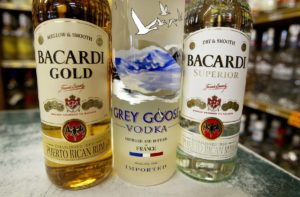 BACARDI “THE RUM CATHEDRAL”, AND THE REVOLUTION IN CUBA. BRIEF HISTORY.
BACARDI “THE RUM CATHEDRAL”, AND THE REVOLUTION IN CUBA. BRIEF HISTORY.
Bacardi Limited is the largest American privately held, family-owned spirits company in the world. Originally known for its eponymous Bacardi white rum, it now has a portfolio of more than 200 brands and labels. Founded in 1862, and family-owned for seven generations, Bacardi employs 6,000 people, manufactures at 29 facilities in 16 markets on four continents, with sales in more than 150 countries.
Bacardi Limited refers to the Bacardi group of companies, including Bacardi International Limited. The company sells in excess of 200 million bottles per year. The company’s sales in 2007 were US$5.5 billion, up from $4.9 billion in 2006.
Bacardi Limited is headquartered in Hamilton, Bermuda, and has a 16-member board of directors led by the original founder’s great-great-grandson, Facundo L. Bacardí. Along with other leading alcohol producers, Bacardi is part of a producers’ commitments organization focused on reducing harmful drinking.
BACARDI AND REVOLUTION IN CUBA.
The Company and other Bacardí family members initially supported the Cuban revolutionaries, including Fidel Castro and the broader M-26-7 movement: Bosch, CEO of the company at that time, personally donated tens of thousands of dollars to the movement and acted as an intermediary between the revolutionaries and the CIA to assuage the latter’s concerns. Family members, employees, and facilities were put to use by the movement and the company supported the revolution publicly with advertisements and parties. But their support turned to the opposition as the pro-Soviet Che Guevara wing of the movement began to dominate and as Castro turned against their interests.
The Bacardí family (and hence the company) maintained a fierce opposition to Fidel Castro’s revolution in Cuba in the 1960s. In his book Bacardi, The Hidden War, Hernando Calvo Ospina outlines the political element to the family’s money. Ospina describes how the Bacardi family and the company left Cuba after the Castro regime confiscated the company’s Cuban assets on 15 October 1960, particularly nationalizing and banning all private property on the island as well as all bank accounts. However, due to concerns over the previous Cuban leader, Fulgencio Batista, the company had started foreign branches a few years before the revolution; the company moved the ownership of its trademarks, assets and proprietary formulas out of the country to the Bahamas prior to the revolution and also built plants in Puerto Rico and Mexico after Prohibition to save import taxes on rum being imported to the United States. This helped the company survive after the communist government confiscated all Bacardí assets in the country without any compensation.
Bacardi ultimately re-established its global headquarters in Hamilton, Bermuda, in 1965. In February 2019, Bacardi’s CEO, Mahesh Madhavan, stated that Bacardi’s global headquarters would remain in Bermuda for the next “500 years” and that “Bermuda is our home now.”
Writer A. Ospina explains the close ties Bacardí family members had to the US political elite as well as to organizations of state such as the CIA. The family funded various Cuban exile organizations, such as CANF.
More recently, Bacardi lawyers were influential in the drafting of the 1996 Helms-Burton Act, which sought to extend the scope of the United States embargo against Cuba. In 1999, Otto Reich, a lobbyist in Washington on behalf of Bacardi, drafted section 211 of the Omnibus Consolidated and Emergency Appropriations Act, FY1999 (Pub.L. 105–277), a bill that became known as the Bacardi Act. Section 211 denied trademark protection to products of Cuban businesses expropriated after the Cuban revolution, a provision sought by Bacardi. The act was aimed primarily at the Havana Club brand in the United States. The brand was created by the José Arechabala S.A. and nationalized without compensation in the Cuban revolution, the Arechabala family left Cuba and stopped producing rum. They, therefore, allowed the US trademark registration for “Havana Club” to lapse in 1973. Taking advantage of the lapse, the Cuban government registered the mark in the United States in 1976. This new law was drafted to invalidate the trademark registration. Section 211 has been challenged unsuccessfully by the Cuban government and the European Union in US courts. It was ruled illegal by the WTO in 2001 and 2002. The US Congress has yet to re-examine the matter. The brand was assigned by the Cuban government to Pernod Ricard in 1993.
Bacardi drinks are not easily found in Cuba today. However, it is sold in many of Cuba’s nightclubs. The main brand of rum in Cuba is Havana Club, produced by a company that was confiscated and nationalized by the government following the revolution. Bacardi later bought the brand from the original owners, the Arechabala family. The Cuban government, in partnership with the French company Pernod Ricard, sells its Havana Club products internationally, except in the United States and its territories. Bacardi created its own line of Havana Club rum based on the original recipe from the Arechabala family, manufactures it in Puerto Rico, and sells it in the United States. Bacardi continues to fight in the courts, attempting to legalize its own Havana Club trademark outside the United States.
Drinks now made in the former Cuban Bacardi distillery are sold in Cuba under the name Caney.
Despite having no production facilities in Cuba today, Bacardi in the UK has recently decided to re-emphasize its Cuban heritage, primarily for commercial reasons. Facing increased competition in the rum market from the now international brand Havana Club, the company concluded that it was important for sales to associate its rum with Cuba. TV advertisements with slogans of “Welcome to the Latin Quarter” are but one example of this. In 1998, under the distinctive bat logo, the phrase “company founded in Santiago de Cuba in 1862” was added.
Agencies/ Wiki/ Extractos/ Excerpts/ Internet Photos/ Arnoldo Varona/ www.TheCubanHistory.com
THE CUBAN HISTORY, HOLLYWOOD.





